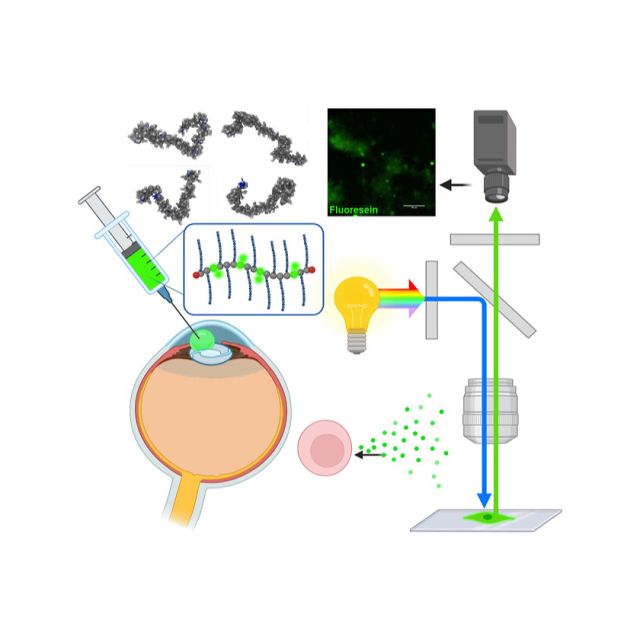Injectable Fluorescent Bottlebrush Polymers for Interventional Procedures and Biomedical Imaging
Enhancing surgical safety with traceable, biocompatible polymer solutions

PIs and Institution
Yichun Yuan, Sophia Beilharz, Heather R. Everson, Nehal Nupnar, Mithun Kumar Debnath, Daniele Vinella, Juan Manuel Urueña, Faruk H. Örge, Michael J. A. Hore, Divita Mathur, Metin Karayilan. Case Western Reserve
Achievement
Injectable fluorescent viscoelastic (FluoVs) polymers were synthesized for ophthalmic and bioimaging applications. These polymers were created through controlled radical copolymerization, resulting in bottlebrush-shaped structures with high fluorescence intensity, low viscosity, and excellent biocompatibility. Fluorescein was covalently attached to the polymer backbone, ensuring stable fluorescence and preventing aggregation. The system was designed to provide enhanced visibility during ocular surgeries, such as cataract operations, while facilitating complete removal of the material post-surgery to reduce postoperative complications.
Importance of the Achievement
This research addresses the limitations of current ophthalmic viscosurgical devices (OVDs) by enabling their complete removal post-surgery. Fluorescently functionalized polymers were utilized to enhance traceability during surgeries, ensuring that the materials were accurately monitored and removed, thereby improving patient safety. The low viscosity and biocompatibility of the FluoVs make them ideal for delicate ocular procedures, while the high fluorescence intensity offers promising applications in bioimaging. These advancements could lead to improved surgical outcomes and expand the potential of these materials in both therapeutic and diagnostic fields.
Synergies with BioPACIFIC MIP
BioPACIFIC MIP enabled this by providing access to its microrheology facility and the expertise of our project scientist, Juan Manuel Uruena. In this study, microrheology played a crucial role in assessing the viscosity and the flow behavior of the fluorescent copolymer solutions, which are key characteristics for their potential use in ocular surgeries.